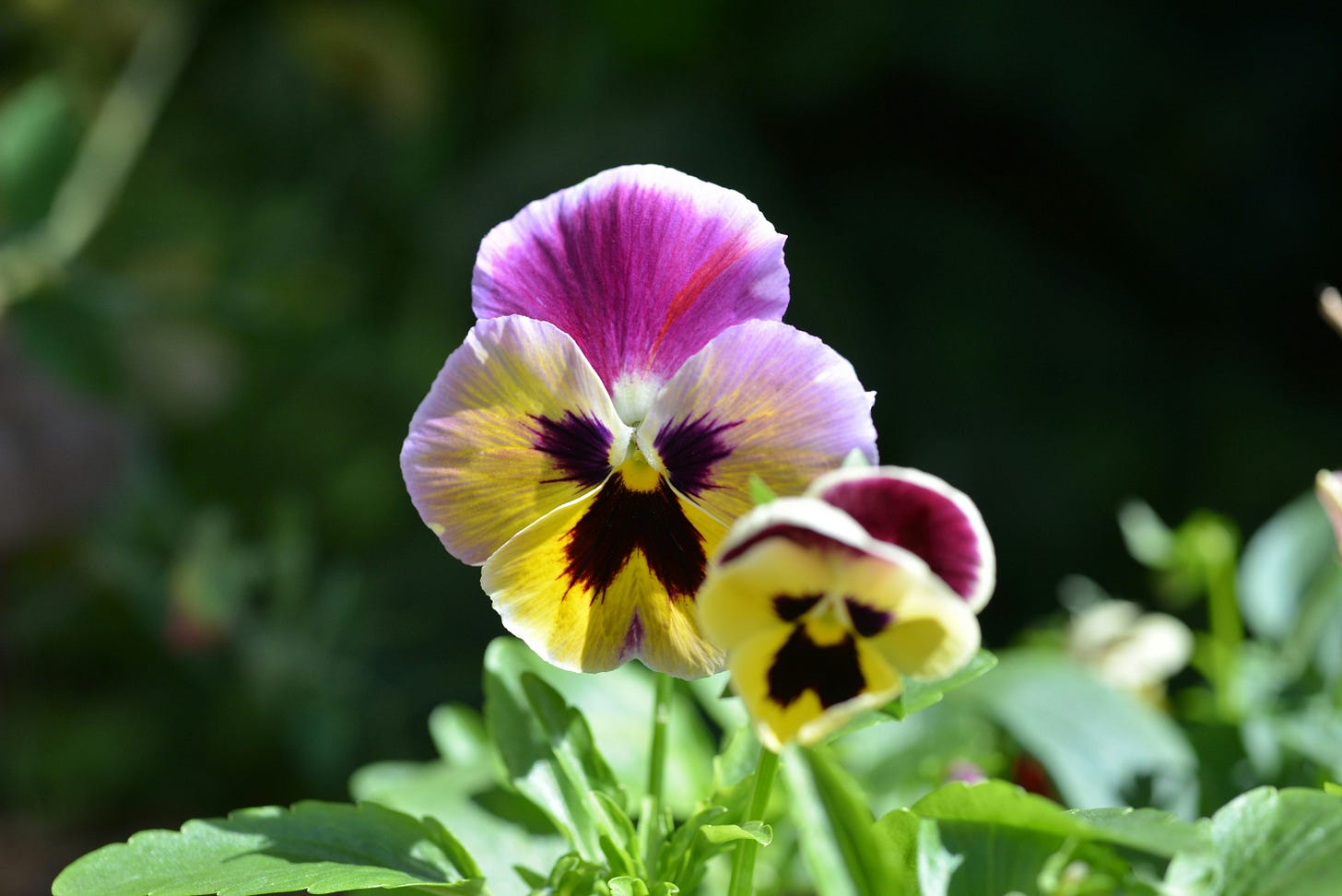Photo by Gavin Allanwood on Unsplash
This past weekend I celebrated my birthday by potting up more than two dozen pansies and violas, about half I grew from seed. It’s still chilly here in southern New England, but these hardy lovelies can stand up to the cold.
Their purples, yellows, maroons, and pinks add a pop of much needed color to our stoop, and their rich mythology sent me down a weekend research rabbit hole.
In ancient Rome, I learned, the Pansy symbolized love. The French have long associated the flower with thought. (And so did DH Lawrence, the English novelist and poet who titled his 1929 book of poems Pansies “because they are rather ‘PENSÉES’ than anything else…casual thoughts that are true while they are true and irrelevant when the mood and circumstance changes.”)
Shakespeare loved the pansy. In A Midsummer Night’s Dream, king Oberon and Puck the fairy devised a love potion out of pansy juice and dropped it on Demetrius’s eyes as he slept so that he would fall in love with the first person he saw upon waking.
Of course, the flower that Shakespeare had in mind as he wrote the play would have looked a little different than the multi-colored pansies of today. Shakespeare’s pansies, known then as “heartsease,” were single or bi-colored. That was the case until the 1830s when the English-born gardener William Thomson bred pansies that showed blotches of color across their lower petals, turning them into the multi-colored, up-turned faces we recognize today.
The Thomson pansy was a sensation. Pansy passion swept across England, and the pansy became known as a rather charmed flower. It was said that if you picked one in bloom, you could hear the thoughts of a loved one. People held pansy shows and built greenhouses dedicated to the flower. At the peak of its popularity, the pansy could be found in as many as four hundred varieties.
My stoop boasts just six varieties, but each looks up at me with a curious face, as if asking for my thoughts—of loved ones or otherwise. I welcome the invitation. Until it warms up enough to tend to the garden regularly, you will find me sitting with the pansies almost every morning, even if just for a moment, to think some thoughts and send the world my love.






You write a lovely ode to the pretty pansy!